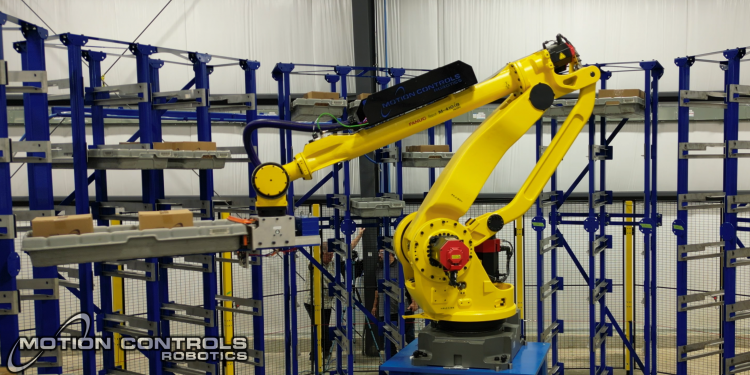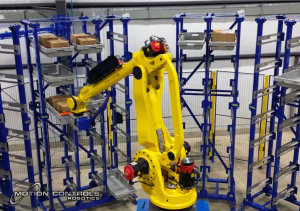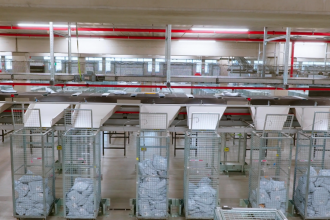Reimagining Warehouse Boundaries with Robots

The name of the game in warehousing is increasing productivity. There are many ways to go about that, but most often, technology is the key piece of the equation. Robots are increasingly the tool of choice, for many reasons. When you incorporate them into your operations, you can expect to reimagine your boundaries.
One of the biggest reasons robots are having a big moment in warehousing right now is that there’s a persistent labor shortage. As older generations retire, the younger generations of workers are avoiding manual labor in favor of more tech-oriented positions. Robots can step in to make up for the labor deficit.
But the gains from robots go well beyond replacing empty jobs. They also can do those same tasks more efficiently. Robots can operate quickly and with fewer errors, in most cases. They also can work around the clock, if that’s what you need. With the labor shortage, finding humans who are interested in working second and third shifts can be a difficult sell. Robots don’t care what time of day it is and will continuously operate if needed.
 Robots can also expand your boundaries by allowing for denser racking. When you replace forklifts with robots, you can make your aisles narrower and pack more products in. You can also take your racking higher because automation like automated storage and retrieval systems (ASRS) can reach heights that humans cannot. In some cases, this might result in more than 200 percent gain of space, without having to invest in expanding your square footage. This allows you to accommodate more customers and/or more products and product variety.
Robots can also expand your boundaries by allowing for denser racking. When you replace forklifts with robots, you can make your aisles narrower and pack more products in. You can also take your racking higher because automation like automated storage and retrieval systems (ASRS) can reach heights that humans cannot. In some cases, this might result in more than 200 percent gain of space, without having to invest in expanding your square footage. This allows you to accommodate more customers and/or more products and product variety.
When it comes to keeping your products safe and avoiding damage, robots also have an advantage over humans, thus allowing you to keep your customers happy—satisfied customers can lead to more business. When you are dependent on humans and forklifts only, operator error can lead to damaged cases, pallets and products. Robots operate more accurately and cause less damage and loss to your inventory.
Over time, robots can also deliver cost savings and a solid return on investment. When you achieve these savings, you have more cash to further invest in your operations and other technologies. This leads to even greater gains in efficiencies and productivity, potentially opening up the door to additional customers.
Robots are not relegated to replacing your labor force, either. They can work as “co-workers” in many scenarios. The advantage to this is that they make the labor you do have more efficient. Additionally, when you free up your associates from the more mundane and manual tasks on the warehousing floor, you can upskill them. For the younger generation in particular, getting their hands on technology rather than cases proves much more appealing. They can use and expand their tech skills, which gives them opportunities to move up the ladder.
If you are looking for ways to reimagine your warehouse’s boundaries, robots are a key component to consider.
Learn more about The Robotics Group (TRG): mhi.org/trg
For further articles from the The Robotics Group (TRG):
Order Orchestration Optimization Through Robots
Robotics in Logistics, Part 2 – You’ve Decided to Add Robots—Now What?
Will Robots Change Your Warehouse Culture?
Robots Make Work Easier For Humans



